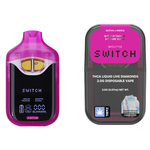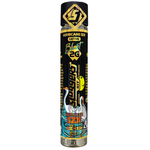According to the Substance Abuse & Mental Health Services Administration's National Survey on Drug Use and Health—1.7 million Americans aged 12+ were using Kratom in 2021.
That was a huge number back then. Was it legal at that time? Is it legal now? Does it show up on drug tests? How long does it stay in our bodies? How much Kratom to take in? There are so many questions lingering, and answers are needed. And this article will do the same—answer all your questions and doubts!
 Kratom is a tropical tree native to Southeast Asia, particularly Thailand, Malaysia, Indonesia, and Papua New Guinea. Its botanical name is Mitragyna Speciosa. In recent years, Kratom has gained popularity in Western countries as an alternative medicine. Folks sometimes use Kratom as an alternative to opioid painkillers, and some use it to try to treat or manage opioid withdrawal symptoms.
Kratom contains compounds called alkaloids, particularly mitragynine and 7-hydroxymitragynine, which interact with opioid receptors (mu-opioid receptors) in the brain. Activation of mu-opioid receptors can produce opioid-related effects at high doses, such as;
Kratom is a tropical tree native to Southeast Asia, particularly Thailand, Malaysia, Indonesia, and Papua New Guinea. Its botanical name is Mitragyna Speciosa. In recent years, Kratom has gained popularity in Western countries as an alternative medicine. Folks sometimes use Kratom as an alternative to opioid painkillers, and some use it to try to treat or manage opioid withdrawal symptoms.
Kratom contains compounds called alkaloids, particularly mitragynine and 7-hydroxymitragynine, which interact with opioid receptors (mu-opioid receptors) in the brain. Activation of mu-opioid receptors can produce opioid-related effects at high doses, such as;
In addition, mitragynine and 7-hydroxymitragynine also affect other chemical systems, including Serotonin, Dopamine, Norepinephrine, and Kappa Opioid Receptors, producing a range of effects.
Kratom is known for its bitter taste, which many find unpleasant. It is often mixed into other foods or drinks. Kratom can be ingested using leaves (which can be used fresh or dried), as well as products like powders, capsules, extracts, and teas. Kratom powder is made by drying and then grinding the leaves of the kratom tree. If you're wondering how to take Kratom powder, then It can be consumed in various ways, including;
 Since Kratom is relatively new in the US and legal in some places, it isn't included in standard 5- or 10-panel drug tests commonly used by employers. These tests generally focus on detecting more common drugs like amphetamines, opioids, marijuana, and others.
However, there are specialized tests available that can detect kratom use. These tests, such as chromatography techniques or specialized urine or blood tests, are designed specifically to test for the active compounds in Kratom.
Even though a standard drug test might not directly detect kratom use, it's important to consider the possibility of false positives if someone has ingested Kratom recently.
Since Kratom is relatively new in the US and legal in some places, it isn't included in standard 5- or 10-panel drug tests commonly used by employers. These tests generally focus on detecting more common drugs like amphetamines, opioids, marijuana, and others.
However, there are specialized tests available that can detect kratom use. These tests, such as chromatography techniques or specialized urine or blood tests, are designed specifically to test for the active compounds in Kratom.
Even though a standard drug test might not directly detect kratom use, it's important to consider the possibility of false positives if someone has ingested Kratom recently.
.
What is Kratom?
 Kratom is a tropical tree native to Southeast Asia, particularly Thailand, Malaysia, Indonesia, and Papua New Guinea. Its botanical name is Mitragyna Speciosa. In recent years, Kratom has gained popularity in Western countries as an alternative medicine. Folks sometimes use Kratom as an alternative to opioid painkillers, and some use it to try to treat or manage opioid withdrawal symptoms.
Kratom contains compounds called alkaloids, particularly mitragynine and 7-hydroxymitragynine, which interact with opioid receptors (mu-opioid receptors) in the brain. Activation of mu-opioid receptors can produce opioid-related effects at high doses, such as;
Kratom is a tropical tree native to Southeast Asia, particularly Thailand, Malaysia, Indonesia, and Papua New Guinea. Its botanical name is Mitragyna Speciosa. In recent years, Kratom has gained popularity in Western countries as an alternative medicine. Folks sometimes use Kratom as an alternative to opioid painkillers, and some use it to try to treat or manage opioid withdrawal symptoms.
Kratom contains compounds called alkaloids, particularly mitragynine and 7-hydroxymitragynine, which interact with opioid receptors (mu-opioid receptors) in the brain. Activation of mu-opioid receptors can produce opioid-related effects at high doses, such as;
- Nausea
- Pain Relief
- Sedation
- Euphoria
- Constipation
- Physical Dependence
- Respiratory Depression, similar to the impact of traditional opioid medications.
- Toss and Wash—Consuming the powder directly with a liquid, generally water.
- Kratom Tea—Mixing the powder with hot water, straining, and drinking.
- Capsules—Encapsulating the powder for easy consumption without tasting it.
- Mix with Smoothies/Food or Kratom Gummies—Blending extract with other ingredients to mask the taste.
- Kratom Shots—Concentrated form and consuming in one quick shot.
Does Kratom Show Up On a Drug Test?
 Since Kratom is relatively new in the US and legal in some places, it isn't included in standard 5- or 10-panel drug tests commonly used by employers. These tests generally focus on detecting more common drugs like amphetamines, opioids, marijuana, and others.
However, there are specialized tests available that can detect kratom use. These tests, such as chromatography techniques or specialized urine or blood tests, are designed specifically to test for the active compounds in Kratom.
Even though a standard drug test might not directly detect kratom use, it's important to consider the possibility of false positives if someone has ingested Kratom recently.
Since Kratom is relatively new in the US and legal in some places, it isn't included in standard 5- or 10-panel drug tests commonly used by employers. These tests generally focus on detecting more common drugs like amphetamines, opioids, marijuana, and others.
However, there are specialized tests available that can detect kratom use. These tests, such as chromatography techniques or specialized urine or blood tests, are designed specifically to test for the active compounds in Kratom.
Even though a standard drug test might not directly detect kratom use, it's important to consider the possibility of false positives if someone has ingested Kratom recently.
What About Saliva and Hair Tests?
Standard drug tests are unlikely to detect Kratom in a saliva test. Similarly, standard hair drug tests do not test for Kratom. Hair tests are generally used to detect drugs that have been used over a longer period, as they can provide a usage history that spans months. While it's theoretically possible to develop a test to identify mitragynine in hair samples, such tests would be specialized and not commonly implemented. In both cases, the detection of Kratom would depend on the availability and application of these specialized tests, which are not part of standard drug screening practices.Some Known Factors Influencing Kratom Detection
- How much Kratom is consumed and how frequently it is used
- Individual metabolic rates that influence how quickly Kratom is processed and eliminated from the body.
- Different strains and types of Kratom, each with varying levels of alkaloids.
- The type of test used (e.g., urine, blood, saliva, hair) and its sensitivity to kratom alkaloids.
- Individual's body mass, fat content, and hydration level.
- The timing of the test relative to the last time Kratom was used.
- The primary route of elimination for Kratom is through the kidneys, so anything that affects kidney function can influence how quickly the body clears Kratom.
How Long Does Kratom Stay In Your System?
The duration that Kratom remains in the body depends on various factors mentioned above. The half-life of Kratom is estimated to be around 24 hours. This means it takes about one day for the body to eliminate half of the ingested Kratom. To fully remove Kratom from the system, it takes at least five days without the substance. Since the effects of Kratom have yet to be studied as broadly as some other substances, the exact half-life may differ among individuals. When someone stops using Kratom after a long or heavy use, they may experience withdrawal symptoms that can last several days. These symptoms can include;- Depression
- Fogginess
- Anxiety
- Muscle Aches

















